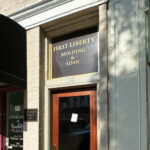A classical nude “Venus” she’s not, but that didn’t seem to matter to whoever paid $33.6 million (£17.2 million) for Lucien Freud’s painting – “Benefits Supervisor Sleeping.” The price was the highest ever paid for the work of a living artist, eclipsing the previous record set by Jeff Koons “Hanging Heart,” which sold for $23.5 million (£12.1 million) last November.
Anyone who pays that much for a painting must also think about the risk of having it stolen or damaged, and therefore the need to insure it. The steady rise in the value of works of art has expanded the horizons of companies and brokers in the field, even if it is still limited to a comparatively few select clients.
After the Freud sale, Richard Evans, associate director at Aon Private Clients in London commented: “Just 14 percent of UK individuals feel confident investing in art during today’s economic volatility, according to Aon’s forthcoming survey, but the rush for quality art shows no signs of abating.”
He cautioned that there’s no way to “insure against a downturn in the modern art market,” so his advice is to “make sure you also find your investment aesthetically pleasing.”
Evans explained how art protection policies usually work. “Art collectors have the flexibility of an automatic acquisition clause. This means that they can purchase a piece for an agreed percentage of their total insured art and it will be covered from the close of auction. For example, a collector with £100 million [app. $200 million] collection would be able to buy up to say, 20 percent, of this amount with the flexibility of having usually up to a month before declaring it on their insurance policy. If the auction price exceeds the
agreed percentage, the purchaser must automatically contact their insurer or broker.
“If the painting goes for the sale price, we’d recommend other collectors look to revalue their Freud pieces. As with the increased popularity with Lowry, our collectors ensured their investments were adequately covered to reflect their new potential value.”
He also noted that the “14 percent of 2,031 survey respondents feeling confident in art,” is a significant decrease from the “38 percent in 2006 when Aon surveyed the public about alternative investments to pensions two years ago in 2006.”
Source: Aon – www.aon.com
Topics Aon
Was this article valuable?
Here are more articles you may enjoy.


 Court Ruling Could Help Shed Light on Owners of Litigation Funders, Medical Clinics
Court Ruling Could Help Shed Light on Owners of Litigation Funders, Medical Clinics  Aon Adds to List of Brokers Suing Howden US for Alleged Poaching, Theft
Aon Adds to List of Brokers Suing Howden US for Alleged Poaching, Theft  Son of Ponzi-Accused Georgia Building & Loan Founder Now an Insurance Agent
Son of Ponzi-Accused Georgia Building & Loan Founder Now an Insurance Agent  Insurance Industry ‘Megadeals’ Dominate 2025, Says PwC
Insurance Industry ‘Megadeals’ Dominate 2025, Says PwC 

